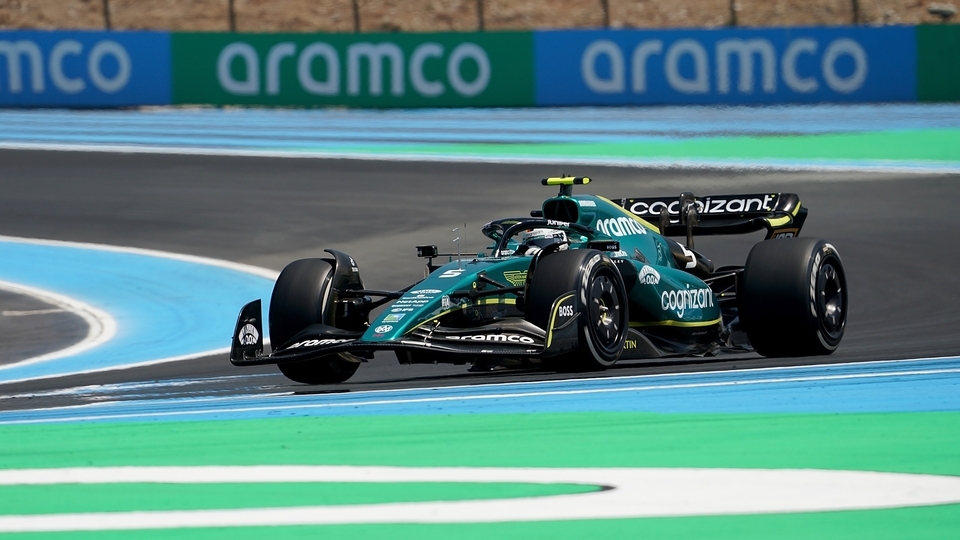As Formula 1 is back in the spotlight thanks to the release of the fifth season of Netflix successful series Drive to Survive, it is no accident that the F1 World Championship will start once again in Bahrain this year. The biggest car competition needs to adapt to the geopolitical changes of the World. And to deal with new stakeholders’ interests…
The recent death of French racing driver Jean-Pierre Jabouille, at the age of eighty years old, was both a sad occasion and a reminder of how much Formula 1 Grand Prix racing has changed over the last four decades.
Jabouille enjoyed some top-level success, winning two races, though he is perhaps best known for driving a Renault during the 1977 World Championship, the first time a turbo charged car had ever raced in F1.
Once upon a time there was F1…
At the time, the car manufacturer was French government owned, and its title sponsor was also from France – Elf Aquitaine. Alongside Jabouille on the grid that season were the likes of Patrick Depailler, who drove an Elf sponsored Tyrell and Jacques Laffite of Gitanes (at one time, a French state owned tobacco monopolist) sponsored Ligier.
Further strengthening Gallic influence on F1, the sport’s governing body’s was presided over by Jean Marie Balestre – another Frenchman (though he only took office in 1978). Balestre’s arch nemesis quickly became a firebrand team owner and his lawyer – Bernie Ecclestone and Max Mosley, who later went on to become owner of F1 and president of the Fédération Internationale de l’Automobile (global motorsport’s governing body) respectively.
Read also: Why Ronaldo’s move to Saudi Arabia increases the chances of an Afroeurasian World Cup
Of the seventeen races staged during the 1977 season, eleven of them took place in Europe. Most of the competing teams at that time were owned and run by Europeans, many of them based in Great Britain. In this regard, the sport perhaps hasn’t changed so much; the country’s motorsport valley still possesses a global competitive advantage, employing 41,000 people (25,000 of them in highly skilled roles).
Red flag for the “good old days”?
However, Britain’s position is under threat and French influence upon F1 seemingly diminishes with each passing year. Although European drivers continue to dominate on-the-track, off it the sport’s governance, where races are held, and who owns the teams have dramatically changed since 1977.
Ecclestone’s ascent from club racer to owning and controlling F1 wasn’t always popular, nor was it an unqualified success. But when he put the sport up for sale in 2016, it was initially the Qatari government that was in pole position to buy the series. In the end, it was instead an American private equity investor, Liberty, which acquired F1.
After a somewhat slow start to its ownership, the Colorado-based corporation has since instigated a commercial transformation. New sponsors – like Saudi Arabian state-owned oil corporation Aramco – have been attracted to the sport; new revenue generating opportunities have been pursued, for instance from a Netflix series (Drive to Survive); and races has been taken to new, increasingly lucrative territories.
Hazard on track
The new F1 season is now looming with a calendar that will see twenty-three races being staged, of which only nine will take place in Europe. Indeed, four of the races will be run in the Gulf – Bahrain, Abu Dhabi, Qatar, and Saudi Arabia. Bahrain and Saudi Arabia will continue in their ownership of the McLaren team, of which Mumtalakat (the sovereign wealth fund of Bahrain) and the Public Investment Fund (the Saudi Arabian equivalent) own sixty-five percent and thirty-five percent respectively.
Recent rumours abound that Saudi Arabia wants to buy the entire sport, a story into which life has been breathed by Mohammed Ben Sulayem, the FIA’s newly elected Kuwaiti president. This has caused consternation amongst the sport’s current owners, teams, and drivers. The latter, a majority of whom remain European, have been further antagonised by Ben Sulayem’s assertion that they must seek permission before engaging in political messaging or protests at races.
The past still has a future
The Arab-American axis now asserting its control over F1 is intriguing, as the commercial allure of the series is beginning to attract the interest of manufacturers such as Cadillac and racers such as the Andretti family – Mario raced for Lotus back in 1977, now his son Michael is contemplating creation of an F1 team. Some Europeans associated with the sport, including former Ferrari team principal Stefano Domenicali, have reportedly described Andretti’s quest to participate in the championship as being driven by greed.
For other Europeans now fretting about the continent’s power and status in F1 being further undermined, there will be some reassuring participants on the coming season’s starting grid. For example, the Williams team is still around; back in 1977 the team was making its debut, under the auspices of former club racer Frank Williams. Mercedes will be there as well, which harks back to the origins and a golden age of F1 in the 1930s and the 1950s.
However, there are some other, more unfortunate familiarities from the past; for instance, British female driver Divina Galica made two abortive attempts to race in F1, at the same time as Jabouille was competing in the sport. This season another British female, Jamie Chadwick, is on the periphery of F1 – she is a member of the Williams Academy. Off-track, female representation in F1 has improved a little, but on-track the championship still has some way to go.
Brave new World
In a similar way, F1 retains the same gas guzzling reputation that it did back in 1977. Although technology has improved the performance and efficiency of cars, F1 is remains in danger of being on the wrong side of history as the world turns against fossil fuels. Rivals are making bigger strides in this regard, Formula E being one example, though F1 does not help itself by taking millions of dollars from petroleum giants such as Aramco. The clock is ticking on F1 as time runs down for it to adopt more environmentally sustainable approaches to racing.
After years of turbulence, brought about by ownership issues and the dominance of Lewis Hamilton and the Mercedes team, some may think F1 has now elevated itself to a position of stability. However, with the sport’s pivot away from Europe towards the Gulf and American interest in it increasing to new levels, the heady European days of 1977 are becoming a distant memory. The 2023 F1 season promises to deliver more changes, which will see F1’s old industrial heartland lose its position in the sport.






